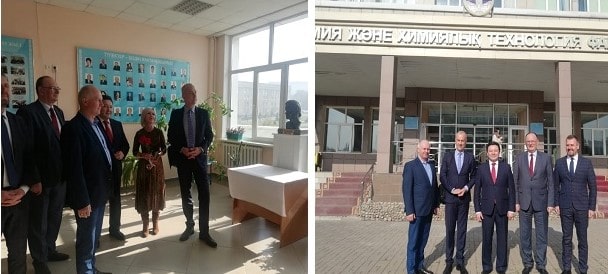In life there is nothing to be afraid of, there is only what needs to be understood
The above quote belongs to the great scientist of the 20th century, twice the Nobel laureate Maria Skłodowska-Curie. With her husband, Pierre Curie, she devoted her life to studying the phenomenon of radioactivity, which was unknown until then. During the research work, such elements as radium and polonium were discovered. They worked in conditions of complete obscurity, having no idea what this new phenomenon is and how it will affect to their health and their environment. The result of their research work was the discovery of a new era in the life of mankind. In the modern world properties of radioactivity are used almost everywhere: medicine, science and technology. The whole world is already talking about nuclear energy, some with admiration, some with fear, but everyone has at least some idea about the nuclear reactors, which one entered to our lives firmly and their role will only intensify.
Nuclear industry of Kazakhstan primarily represented by uranium ore mining. The first uranium deposits were discovered on the territory of Kazakhstan in the 50s of the XX century. For present time, the role of the uranium industry for economy of Kazakhstan is huge. Almost a third of the world's uranium reserves are located on our territory, which provided the possibility for rapidly development of this industry.
About 20 years on the basis of the Faculty of Chemistry and Chemical Technology of Al-Farabi Kazakh National University exist laboratory of radiation ecology under the leadership of professor Burkitbayev M.M. The laboratory deals with issues of assessing the impact of the uranium industry on environmental objects, also improving the methods of determining radionuclides in various environmental objects, as well as improving certain stages of the nuclear fuel cycle. UNESCO declared the year 2011 as year of Mary Skłodowska-Curie, in the same year the Laboratory of Radiation Ecology of al-Farabi Kazakh National University was named after an outstanding scientist, for the contribution made by this laboratory in promoting her work. A bust of M. Skłodowska-Curie is installed in the hall of the faculty, and in the nearest audience you can introduce with her life and work, which is very useful for the younger generation of students, who during the break can get acquainted with her achievements and in near future possibly continue her work.
The achievements of this laboratory are recognized not only at the regional level, but also at the international level. The laboratory has long strong connection with a number of leading institutes in the field of radiochemistry and radiation ecology, formed associated with the implementation of projects under the NATO Science for Peace Program, UNESCO, IAEA, ISTC.
Delegation of the Lubusz Voivodeship of Poland headed by Vice Marshal Stanislav Tomczyszyn visited the laboratory of radiation ecology in 19 November 2019. The administration of the Lubusz Voivodeship annually allocates significant funds for their universities for the development of science and education, and the field of radiochemical research takes a special position for them. The delegation introduced with the available capabilities of the laboratory and the faculty. During the meeting discussed about further plans and possible joint projects with the head of laboratory of radiation ecology named after M. Skłodowska-Curie with the participation of dean of the Faculty of Chemistry and Chemical Technology Tassibekov Kh.S. Representatives of the Polish delegation honored the memory of their compatriot by laying flowers at her monument. They thanked the Kazakh side for continuing the work of the great scientist M. Sklodovskaya-Curie.









